
Features
Equipment
Sawmilling
BC sawfilers convention merges history, present and future
May 30, 2023 By Jennifer Ellson
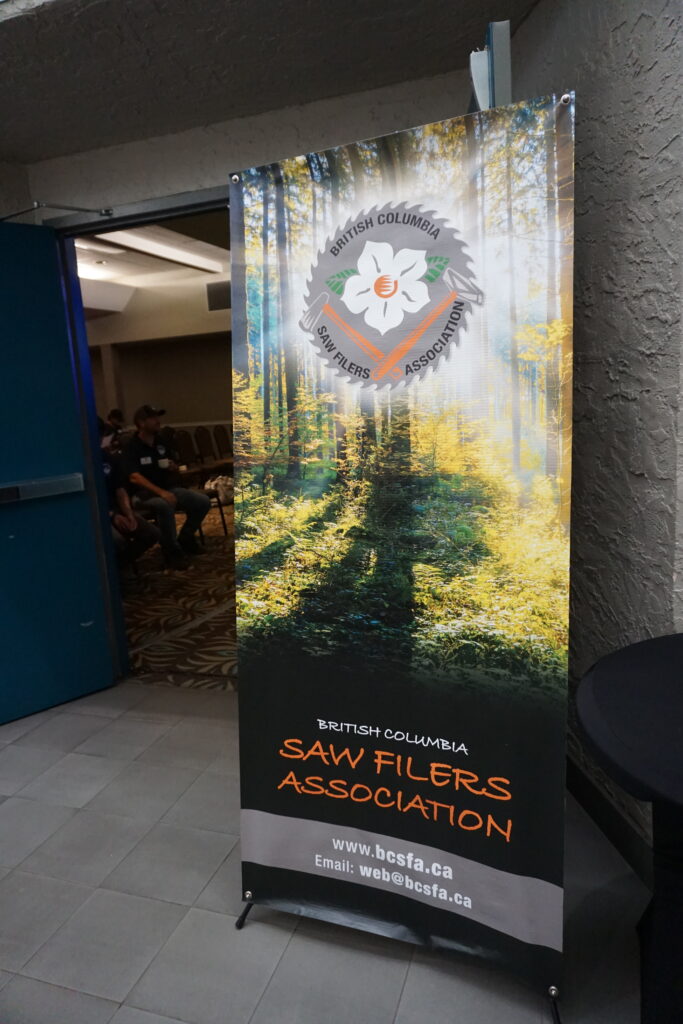 Photo: Annex Business Media
Photo: Annex Business Media Filers converged in Kamloops, B.C. from May 26-27 to hear about the latest equipment and advancements in saw filing, discuss current issues afflicting the trade and even learn more about the sector’s history.
Members of the BC Saw Filers Association (BCSFA) meet annually to share knowledge and resources for the benefit of all involved in the saw filing trade.
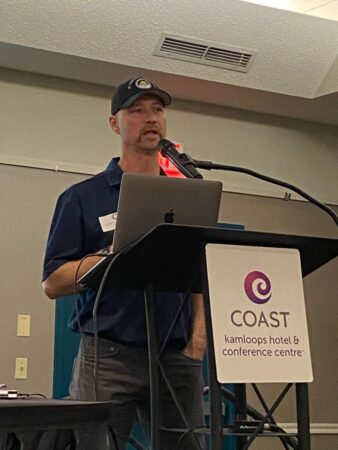
BCSFA president Sean Wright welcomed around 100 sawfilers, mill managers and maintenance supervisors, as well as 36 exhibitors on Friday with a little bit of history.
In his welcoming remarks, Wright showed a video of the only fully-functioning miniature sawmill in Canada built in the early 1960s by Phil Quelch, who was a saw filer and educator. Wright said the 16-feet model sawmill comes complete with conveyor belts, saws, lights and a wood chipper, and is on display at the Westbank Museum in the Okanagan. He encouraged attendees to donate to keep the model mill operating since it is a valuable teaching tool for saw filing apprentices.
“We’re losing our trade – it would be nice to keep this model mill going. We’re looking for donations for parts to keep it going and use it for educational purposes,” Wright said.
Filing room quality expectations
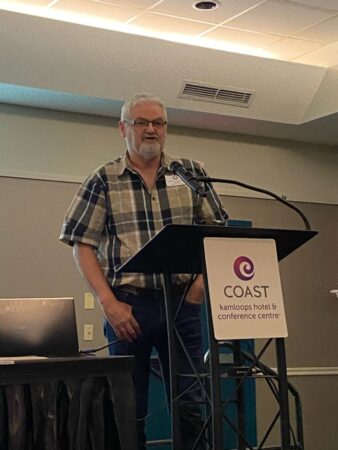
John Hebert, former head sawfiler for Gorman Bros. took the podium next and talked about best practices to maintain quality in the filing room. This include watching out for and cleaning burrs on clamping surfaces; replacing guides every 10-15 years depending on usage, wear and damage, and replacing all guides at least every two weeks.
“The combination of discarding saws in poor condition, new guides and regular guide changes resulted in roughly five per cent reduction of planer skip,” Hebert said.
In terms of saw guide lube settings, Hebert said saw guides must be pressurized and balanced. Using good quality oil is key, as oil must emulsify with water and should “feel light” on saw and guides and not dripping like honey.
When it comes to arbor sleeve maintenance, he said sleeves should be moved .200 at least every four months in gangs.
“Make sure to clean thoroughly, remove rust, apply liberal grease on reinstallation at every movement,” he advised. Using good quality waterproof grease is also important, as oil will dry out resulting in rust, possibly requiring puller to remove sleeves.
Always make sure gauges are straight and not dog-eared before using, he added. If bent, it should be gently hammered, and regrind when straight.
Lastly, Hebert shared some of the attributes that should be in every saw filer apprentice: being on time, good work ethic, being coachable, having energy and passion, among others.
“This has nothing to do with saw filing, but everything to do with saw filing.”
Machine center alignment
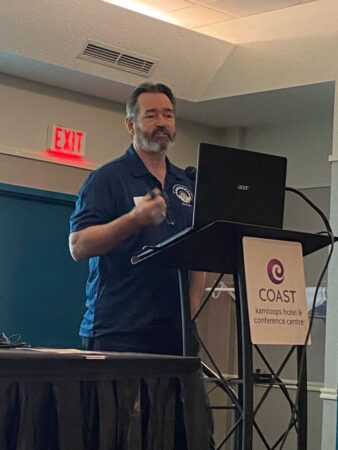
“We always think alignment is some other people’s problem,” said the next speaker Marty Vatkin of Sawline Consulting and former head filer and BCSFA president. Alignment is crucial in the entire machine’s operation, he said.
Vatkin explained the three types of alignment being used in the trade.
Wire alignment is performed with wire stretched through the machine and anchored at either end. Components are measured in relation to the wire and adjusted as required.
Straight edge alignment is performed with a precision ground straight edge. Measurements are taken using rulers, levels and dial indicators.
Laser alignment is performed much the same as wire alignment. The laser system utilizes a light source, a detector and a computer box. Several different jigs are used to allow measurements to be taken.
As for which one is the best to use, Vatkin said, “Any system you don’t understand is a bad system. The system you should use is the one you’ve got and preferably everyone in the shop knows how to use it and the responsibility does not fall on just one person.”
Vatkin explained the “law of compensating for errors” that some mills operate under.
“My dad once said ‘you didn’t have time to do it right, but you had time to do it again and again, and again.”
Unfortunately, most mills think the only time to do an alignment is when things are broken, but Vatkin reiterated that the better way is doing it before things break. Infeed is important too, as if it is not set properly, then it does not matter what else one does – one will just keep compensating.
“It’s like closing the gates after the horse is gone.”
He added that the mill’s quality control team is “the biggest enemy you will ever have, and the biggest asset” because they understand the problems that saw filers encounter.
In conclusion, Vatkin said, “The one thing that we should be doing often, we do less of: maintaining the machine is crucial.”
New saw lube system
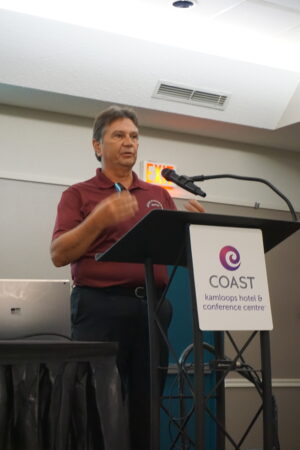
Roland Davyduke of Real Performance Machinery (RPM) introduced his Virginia-based company and its ProLube saw guide lube system that was developed for the company’s proprietary ProSaw system.
Davyduke, an electrical engineer, also briefly talked about RPM’s other equipment and technology in engineering design, manufacturing, automation, controls development and support.
Anodizing aluminum guides
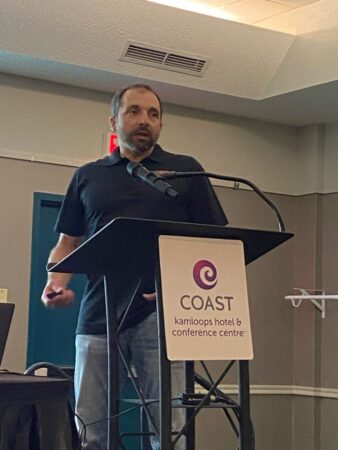 Josh Bergen of Precision Machinery talked about the process of anodizing aluminum –an electrochemical process that converts the metal surface into a decorative, durable, corrosion-resistant, anodic oxide finish.
Josh Bergen of Precision Machinery talked about the process of anodizing aluminum –an electrochemical process that converts the metal surface into a decorative, durable, corrosion-resistant, anodic oxide finish.
Bergen highlighted guide dressers, the high-tolerance machines that directly affect saw performance and lumber quality. He discussed the causes for guide dressers to cut out of tolerance, including worn cutters, foreign material, damaged or worn/out of spec guides, and machine crashes caused by operator error – and ways to prevent it, which includes evaluation, training, torque sensing, accountability and reporting.
Chip quality
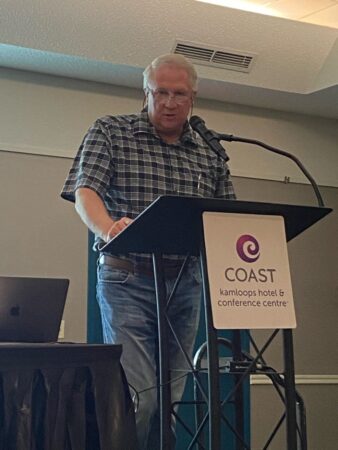 “We really need good chips at the pulp mill,” said Tom Hoffman, fibre manager at Kruger, Inc., who introduced the sawblade experts to Kruger’s Kamloops Pulp operations via his presentation.
“We really need good chips at the pulp mill,” said Tom Hoffman, fibre manager at Kruger, Inc., who introduced the sawblade experts to Kruger’s Kamloops Pulp operations via his presentation.
Built in 1965 as a 250 tonne/day pulp facility , the mill is now producing more than 1,150 tonnes/day of pulp, employing 340 workers onsite and 1,000 indirect workers.
Hoffman clearly stated what his mill is looking for in terms of ideal chips for kraft pulping: thickness of 25 mm x 25 mm x 4 mm; 100 per cent sound stem wood; no bark or knots, plastics, metal, sand or rubber; and has 50 per cent moisture content.
Quality control
SiCam Systems’ Nick Barrett ended Day 1 of the conference and presented on SiCam’s quality control technology for the sawmills and planer mills, to help them utilize better yields all throughout their production process, cut closer to target using their different variety of scanning technology and proprietary software.
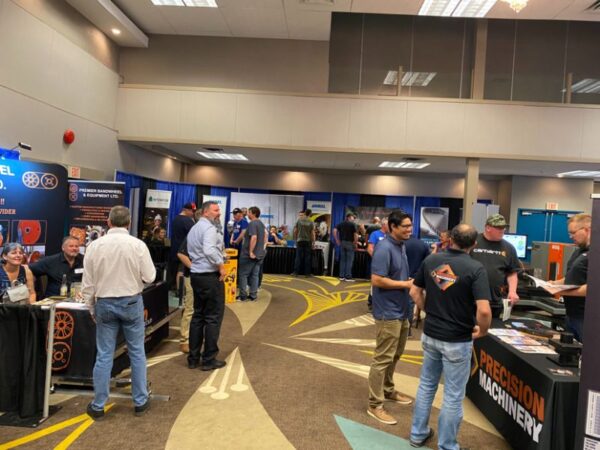
2023 BC Saw Filer’s Association trade show in Kamloops, B.C. Photo: Annex Business Media.
The trade show opened in the afternoon, where 36 vendors exhibited and showcased their new equipment, tools and services.
Door prizes donated by the vendors were given at the trade show floor for both attendees and exhibitors.
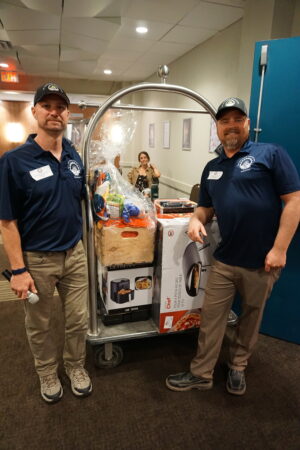
(L-R): Sean Wright and Scott Courtney giving away donated door prizes. Photo: Annex Business Media.
The sawblade ninjas then enjoyed the evening with a buffet dinner and entertainment featuring comedian Leland Klassen, followed by a dance with music from a live band.
“It’s the perfect blend of education, business and socialization,” described BCSFA vice-president Scott Courtney.
Day 2
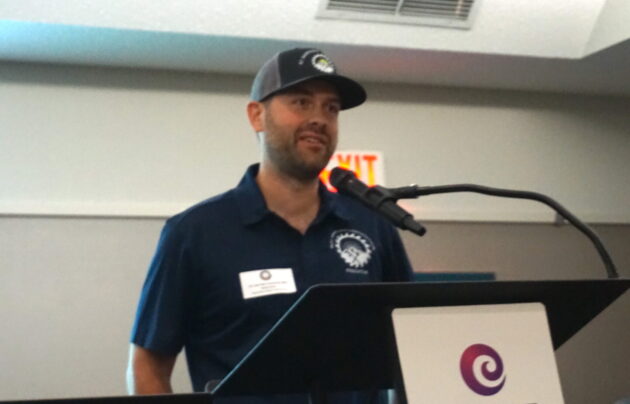
Bryce Hamre. Photo: Annex Business Media.
Day 2 started with BCSFA’s Bryce Hamre showing the association’s website redesign, which now includes a forum where the filers can exchange information, post jobs on the job board, and buy and sell tools.
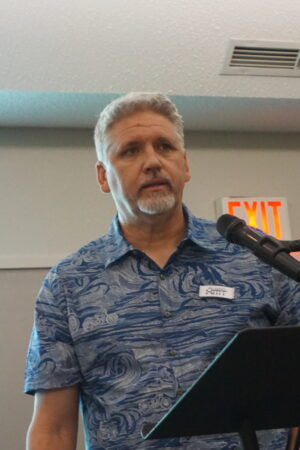
Eric Gabara. Photo: Annex Business Media.
Eric Gabara of HMT Machine Tools subbed for Grasche USA co-owner and president Richard Comer in presenting about saw steel. HMT Machine Tools is a dealer for Grasche’s equipment and Gabara did a great job explaining Grasche’s products and their importance in the filing room, especially because “these days, everybody is short-hand,” he mused.
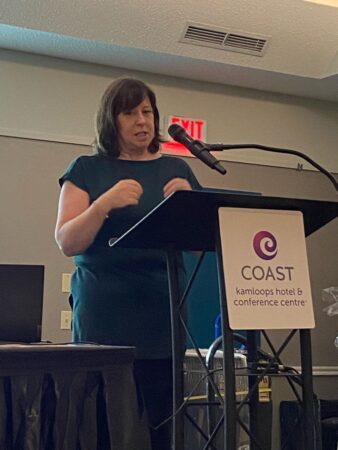
Jennifer Booth. Photo: Annex Business Media.
Jennifer Booth from SkilledTradesBC, formerly called Industry Training Authority, updated the attendees about the Saw Filer Trade Program. As of April 1, SkilledTradesBC has registered 199 apprentices: 127 active and 72 inactive who could continue their training at any time.
“The association’s input is very important, and the program will be reviewed in the near future based on BCSFA’s feedback,” Booth said.
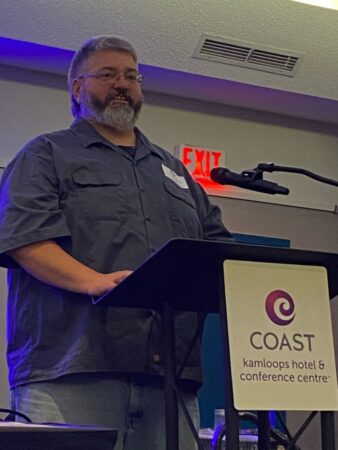
Reg Hewitt. Photo: Annex Business Media.
Reggie Hewitt, instructor at Thompson Rivers University’s (TRU) Williams Lake saw filing training centre closed out the conference with some updates about the sawfiler program and a call for donations.
“TRU is committed to supporting the trade. Classes are capped at 16 apprentices,” he said. “Band saws have been donated to the program, and donations sure help us out,” he added.
He reiterated, however, that the school is similar to a testing centre, where apprentices are bein prepared for the exam and certification.
“You have to be trained enough before you go to the TRU program … you can’t be trained from scratch in four weeks.”
The BCSFA president agreed saying, “Make sure your apprentices are ready before they go to the program.” Wright explained, “Mills tend to rush sending apprentices to the program because we are worried of losing the school again, but we have to make sure the apprentices are ready.”
Future editions
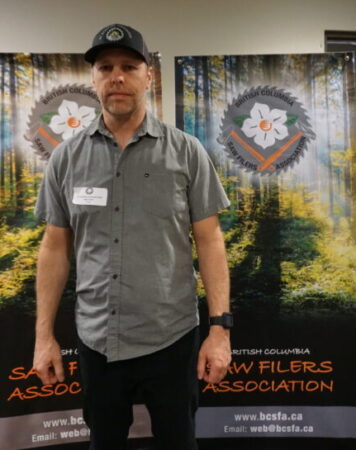
BCSFA’s Matt Graves. Photo: Annex Business Media.
Despite the lower turnout from the previous year, BCSFA secretary and treasurer Matt Graves is positive saying, “We had a great turnout, considering the way the market is going. It’s great to see the support of the sector.”
This article is part of CFI’s 2023 File Week. Find the File Week landing page here.
Print this page